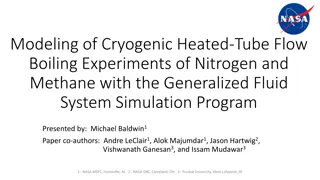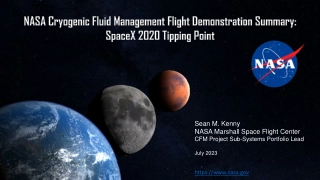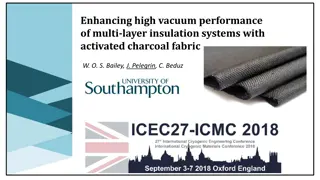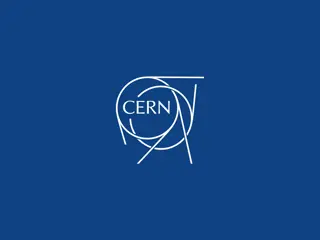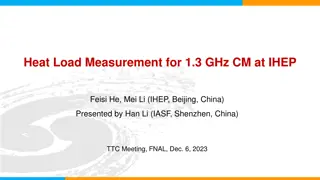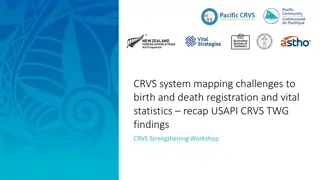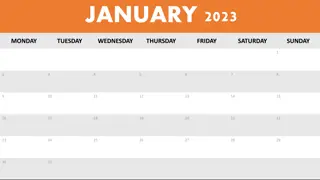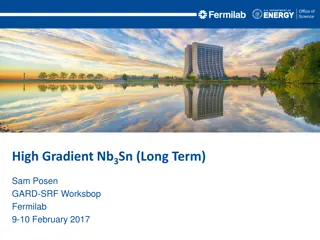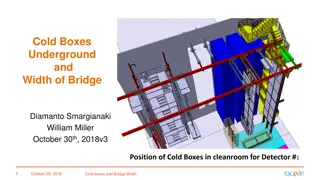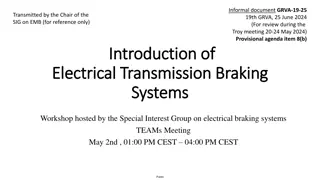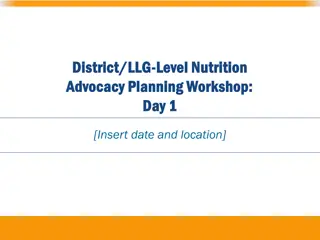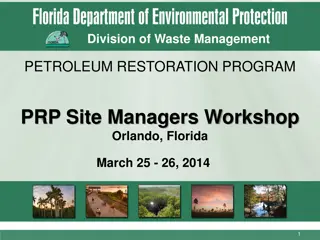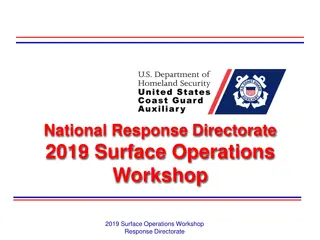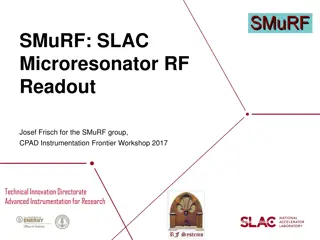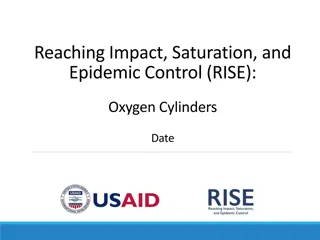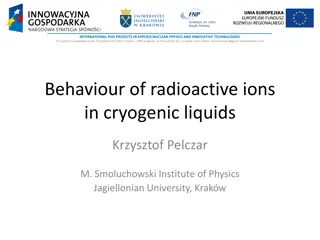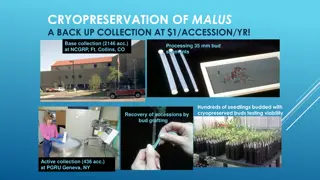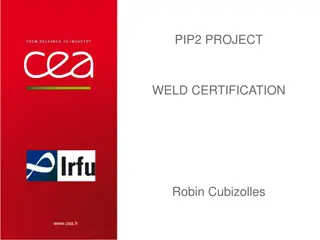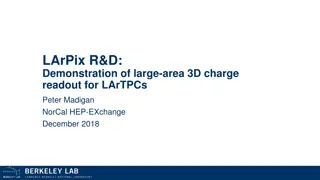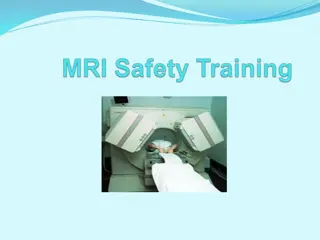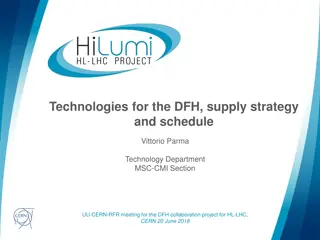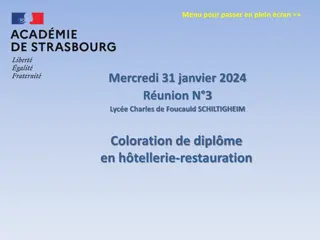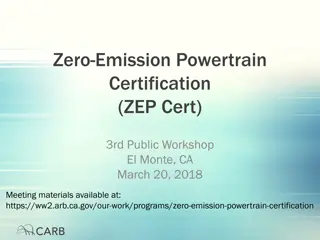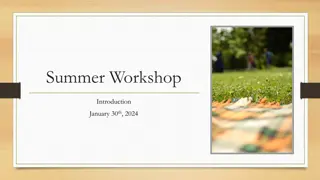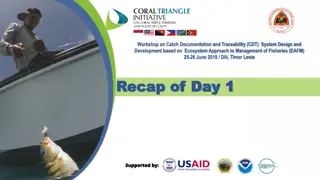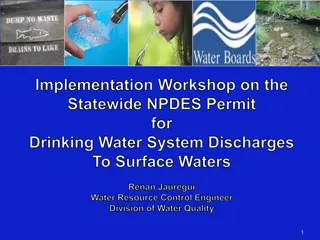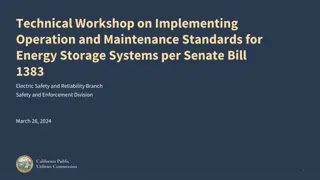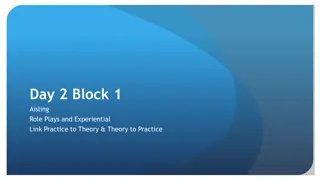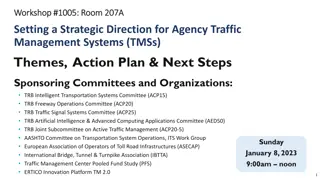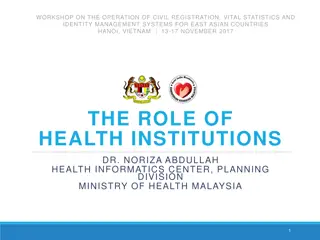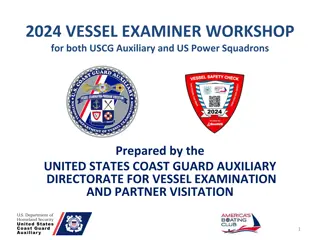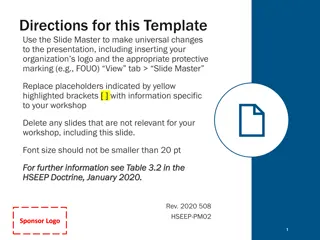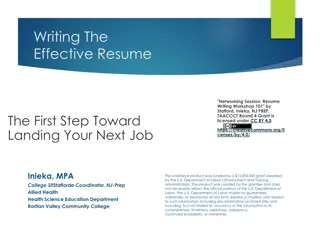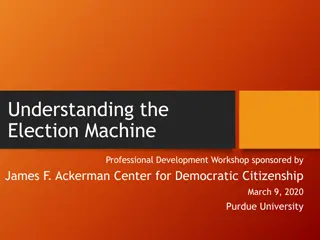Cryogenic Systems Workshop Day 3 Highlights
During the Cryogenic Systems Workshop Day 3, speakers like Pawel Duda and Ram Dhuley discussed stress and flexibility criteria for bayonets and control valves. They explored topics such as thermal contraction effects, boundary conditions in structural analysis, and the importance of considering different operating temperatures in the design process. The workshop emphasized the need for robust designs while minimizing the use of expensive elements like bellows.
Download Presentation

Please find below an Image/Link to download the presentation.
The content on the website is provided AS IS for your information and personal use only. It may not be sold, licensed, or shared on other websites without obtaining consent from the author. Download presentation by click this link. If you encounter any issues during the download, it is possible that the publisher has removed the file from their server.
E N D
Presentation Transcript
Cryogenic Systems Day 3 Summary Andrew Dalesandro / Fermilab PIP-II Technical Workshop 03 December 2020 A Partnership of: US/DOE India/DAE Italy/INFN UK/UKRI-STFC France/CEA, CNRS/IN2P3 Poland/WUST
Pawel Duda; Stress and flexibility of bayonets, control valves, and supports Simplified line drawing of PV between supports is for visualization only Does position of the bellows between fixed supports with PV effect flexibility? Bellows are expensive elements and more prone to failure. Minimizing bellows is a strategy for more robust design, all things equal. Location of the bellows in the main line does not matter much, force generated by thermal contraction is fixed (proportional to length and temperature) and not a function of the position of the bellows. What is boundary condition on main line where bellows are located for structural analysis? CAEPipe software was used for calculating forces and deflections. More explanation will be provided in subsequent talks. The 184 MPa expansion stress (198.5 MPa allowable) due to thermal contraction, what CODE is used (ASME allowable is lower)? PED, EN13480-3. More detail will be provided in subsequent talks. Thermal contraction coefficient is temperature dependent, how is this accounted for in the analysis? The temperature profile of the component is calculated in the FEA software, the temp-dependent contraction data is imported into the software, and the software calculates expansion based on the material properties against the calculated temperature profile. Control valve max deflection is specified by manufacturer. Were these values used in the analysis or was the deflection calculated? Calculated and compared to mfg values. For small valves the max allowable dl ~ 3 mm, for larger valves dl ~ 2 mm, and calculated values were less than these. PIP-II Technical Workshop | Cryogenic Systems Recap Day 3 | A. Dalesandro 3 Dec 2020 2
Ram Dhuley; Stress and flexibility criteria for bayonets Does EN13458-2 or EN13480-3 distinguish difference between seamless & welded pipe? The CODE allowable stresses are determined for the material (not shape) only. When the intermediate part of the thermal shield is connected to the bayonet, does this have an effect on flexibility? The connection between bayonet and thermal shield has flexibility and includes thermal intercepts with flexible braids, therefore there is no rigidity at this joint Has max deflection due to non-steady operations (e.g. stinging/unstinging bayonets) been considered? So far only the steady state analysis (nominal operating temperatures) has been considered. The Cryo dept has typically used an allowable lateral deflection at the end of the bayonet of ~ 0.5 mm, but the source for this value is unknown. If we take into account the coupling of the male/female joint, the stiffness will be higher, was this accounted for in the analysis? No, we only considered the female bayonet for simplicity, which is also conservative Bayonet analysis performed at cryo operating temps and at room temp, since the warm end will always be at room temp, will allowables change between the two scenarios? Allowable stresses are taken as room temperature properties for structural analysis, therefore the stresses at cryo temps should be more conservative PIP-II Technical Workshop | Cryogenic Systems Recap Day 3 | A. Dalesandro 3 Dec 2020 3
Pawel Duda; Thermo-mechanical FEA models development, specification, and methodology What is convection coefficient in slide 12 used for? Is used for analysis of external vacuum jacket temperature profile, to confirm above dew point of the Tunnel Slide 16 equivalent stress profile of some pipes is uniform in plane and others are not, why is this? Some pipes exhibit bending in a single principal direction (i.e. straight down toward the center) while others experience bending in multiple principal directions (downward and horizontally toward center) What is boundary condition on main line where bellows are located (the non-fixed end) for structural analysis? Loads from compensation bellows are added to the reaction loads at the free end of the pipes using CAEPipe software. PIP-II Technical Workshop | Cryogenic Systems Recap Day 3 | A. Dalesandro 3 Dec 2020 4
Follow Up Topics Allowable lateral deflection of control valves G10 stems are expected to be comparable to those with steel stems, based on manufacturer feedback. However manufacturers do not have published specification data for G10 stems. This is an important topic to confirm before fabrication. Does EN13458-2 or EN13480-3 distinguish difference between seamless & welded pipe? The CODE allowable stresses are determined for the material (not shape) only. Has max deflection due to non-steady operations (e.g. stinging/unstinging bayonets) been considered? So far only the steady state analysis (nominal operating temperatures) has been considered. The Cryo dept has typically used an allowable lateral deflection at the end of the bayonet of ~ 0.5 mm, but the source for this value is unknown. PIP-II Technical Workshop | Cryogenic Systems Recap Day 3 | A. Dalesandro 3 Dec 2020 5
Lessons Learned PIP-II Technical Workshop | Cryogenic Systems Recap Day 3 | A. Dalesandro 3 Dec 2020 6


